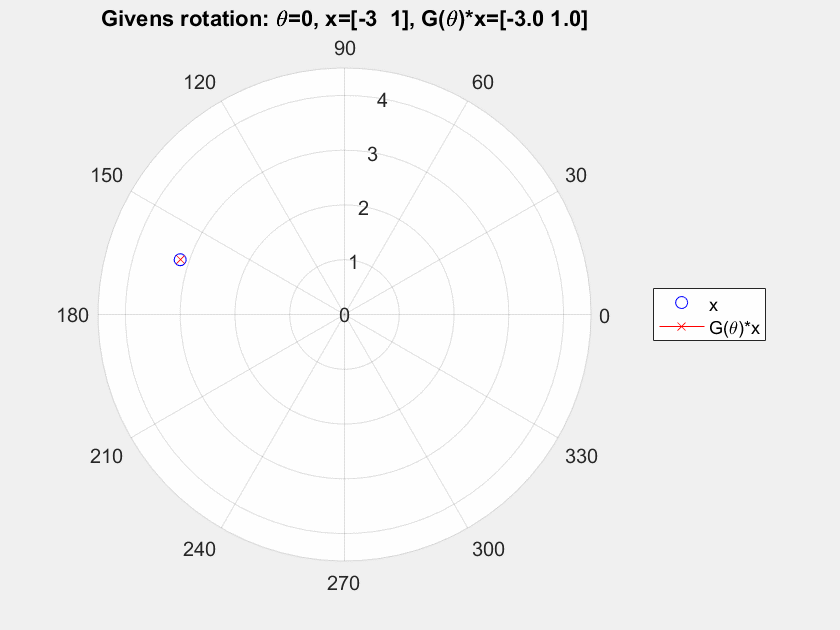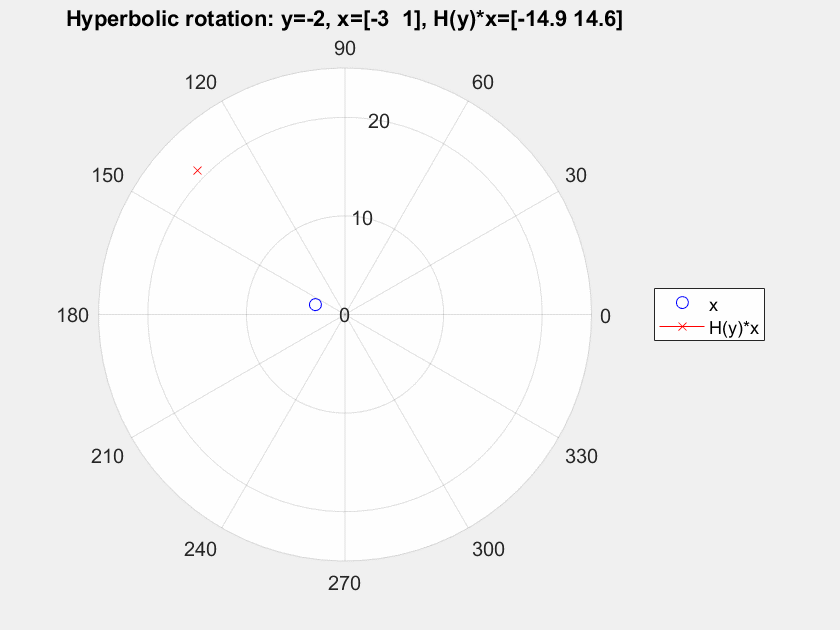The answer to your question is yes - by now you've probably already seen this and moved on, but I post this anyway for the benefit of other readers. The hyperbolic functions, such as
$\sinh$ and $\cosh$,
are one of those topics that is almost always skipped right over in undergraduate math, then if it happens to pop up after that everyone acts like you must have seen it a million times. As a result there seem to be a lot of questions like this on the web, often with overly complicated answers. Anyway, here's my attempt at aiding that situation.
The hyperbolic functions are so called because they arise from the hyperbola
$x^2-y^2=1$, analogously to how the ordinary trigonometric functions relate to the circle
$x^2+y^2=1$
(but not quite in the way you might think).
Recall how if
$\theta$ is an angle off the positive $x$-axis in $\mathbb{R}^2$, going counterclockwise, then the point on the unit circle intercepted by $\theta$ will be $(\cos\theta, \sin\theta)$. We want to do something similar, replacing the circle with the hyperbola as mentioned, but for the analogy to work we need to describe the unit circle scenario a little differently.
First of all, get a good picture in your head (or draw one, or look one up) of the hyperbola
$x^2-y^2=1$.
It has two components: one on either side of the $y$-axis, and if we consider the places where an angle $\theta$ as above would intercept a point on it, we would be limited to
$\theta\in(-\frac{\pi}{4},\frac{\pi}{4})\cup(\frac{3\pi}{4},\frac{5\pi}{4})$
plus multiples of
$2\pi$.
But as you can see from the exponential definition of these functions, $\cosh$ and $\sinh$ have domain $\mathbb{R}$.
So, instead of thinking about the angle $\theta$, think about the area $\alpha$ bounded by its initial ray (the $x$-axis), its terminal ray, and the circle. Putting $\theta$ in radians, this area is $\alpha=\theta/2$ (for instance, the area of the whole circle is $\pi$, which is traversed by the full rotation $2\pi$). Looking now at the point intercepted by $\theta$ on the circle in terms of $\alpha$, we have $(\cos 2\alpha,\sin 2\alpha)$.
This is the correct setup for moving to the hyperbolic setting. Suppose $\alpha$ is now the area bounded by the $x$-axis, some other ray $\rho$ coming out of the origin, and the hyperbola $x^2-y^2=1$. Now identify the point on the hyperbola intercepted by $\rho$. The coordinates of this point will be $(\cosh 2\alpha, \sinh 2\alpha)$. Note that the $\alpha$ values you can get in this way are arbitrarily large, even though to bound an area $\rho$ can't pass (or hit) $\frac{\pi}{4}$ off the $x$-axis - using some calculus (and probably an integral table - the integral is ugly) you can see that the area between the diagonal line and the hyperbola, in the first quadrant, is infinite. If you want negative $\alpha$, just move your ray down and call the area negative.
This gives your second identity easily. The first one takes a little more work.
I think what you're looking at is what's called as Active versus Passive transforms. They're just two ways of looking at the same transform.
In an active transform, you think of the coordinate frame remaining the same, while the "objects" moving.
In a passive transform, you think of the objects staying in the same place, but the coordinate system moving in the opposite direction so the same (net) effect takes place


Best Answer
You can say that ${\bf H}(y)$ is a rotation, not for the usual inner product $$\langle {\bf x}, {\bf y}\rangle_E = x_1y_1 + x_2y_2,$$but for the Lorentz-Minkowski product $$\langle {\bf x}, {\bf y}\rangle_L = x_1y_1 - x_2y_2.$$ In the same way that orthogonal transformations are linear maps preserving $\langle\cdot,\cdot\rangle_E$, we call the linear maps preserving $\langle \cdot,\cdot\rangle_L$ Lorentz transformations.
The point is that ${\bf H}(y)$ is not an orthogonal map, but a Lorentz transformation. You can see it as a "rotation" moving points along hyperbolas $xy = {\rm constant}.$
In $\Bbb R^n$, consider $$\langle {\bf x},{\bf y}\rangle_L = x_1y_1+\cdots+x_{n-1}y_{n-1} - x_ny_n.$$Call ${\bf x} \neq {\bf 0}$ spacelike, timelike or lightlike if $\langle {\bf x}, {\bf x}\rangle_L$ is positive, negative, or zero.
In the Euclidean case, we call the elements of ${\rm SO}(n,\Bbb R)$ (orthogonal maps with unit determinant) rotations (with respect to the Euclidean inner product). You can mimic that and say that Lorentz transformations with unit determinant are rotations with respect to the Lorentz-Minkowski product. You must be careful in odd dimensions, though. For example, in $n=3$ Lorentz transformations with unit determinant always have an eigenvector. The rotation will be called hyperbolic (resp. elliptic, parabolic) if said eigenvector is spacelike (resp. timelike, lightlike).
In your case we consider ${\bf H}(y)$ a hyperbolic rotation seeing the plane $\Bbb R^2$ as the $xz$ (or $yz$) plane in $\Bbb R^3$, so that the eigenvector $(1,0,0)$ of $$\begin{pmatrix} 1 & 0 & 0 \\ 0 & \cosh y & \sinh y \\ 0 & \sinh y & \cosh y\end{pmatrix}$$is spacelike.